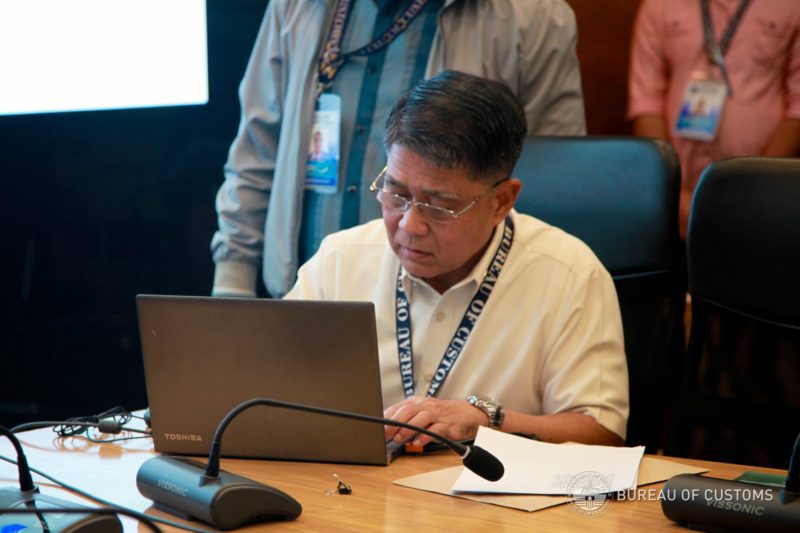
Customs Commissioner Rey Leonardo Guerrero has reminded Bureau of Customs (BOC) officers that the values in the National Value Verification System (NVVS) are not substitute values but reference values that can support assessment personnel in the valuation of goods.
Guerrero, in a memorandum dated February 20 and signed February 21, said “assessment personnel should strictly value the imported goods in accordance with the provisions of Sections 700-707 (Sequential Application of Valuation Method) of the CMTA (Customs Modernization and Tariff Act).”
Under the CMTA, Sections 700 to 707 provide the basis for valuation. This basis for valuation includes the sequential application of valuation methods (Sec. 700) and the valuation methods: Transaction Value System or Method One (Sec. 701); Transaction Value of Identical Goods or Method Two (Sec. 702); Transaction Value of Similar Goods or Method Three (Sec. 703); Deductive Value or Method Four (Sec. 704); Computed Value or Method Five (Sec. 705); and Fallback Value or Method Six (Sec. 706). Section 707 is the Ascertainment of the Accuracy of the Declared Value.
Guerrero said the NVVS is a risk management tool intended to establish doubt or alert customs officials to do a value verification check in order to ascertain the truth or accuracy of any statements, documents or declarations presented before BOC to avoid trade mis-invoicing or undervaluation.
Guerrero added that “whenever the NVVS is to be used, the same should not in any manner cause undue delay, obstruct or impede the regular procedure of cargoes.”
The NVVS is the agency’s internal system that customs assessment officers may access to verify whether the value declared by the importer is the price actually paid or payable for the goods when sold for export to the Philippines.
However, complaints and concerns about the system have been raised by stakeholders since it was implemented in the second half of last year.
The Chamber of Customs Brokers, Inc. (CCBI), in a complaint letter to Guerrero dated November 12, 2019, cited instances of “non-acceptance of the proof of payment as evidence for shipments with higher NVVS compared to the declared value.”
“There are many instances wherein shipments have been upgraded to match the NVVS value despite the submission of complete documents with proof of payments,” CCBI claimed.
The BOC Employees Association, in a statement, said they “strongly reject” the implementation of NVVS, claiming it was anti-trade facilitation as it “forces” customs officers to “adopt a valuation that is based on a database of previously utilized values with a per-kilogram unit value.”
In the wake of such complaints, the House of Representatives Committee on Ways and Means Committee held several hearings on the NVVS and later created a technical working group (TWG) with BOC to discuss the issues raised over the NVVS.
READ: BOC-House technical working group to review NVVS
BOC last year also started a review of the system as requested by the same committee. While the review is ongoing, BOC is working on enhancing the NVVS by improving data collected by the agency’s electronic-to-mobile (e2m) system, Import Assessment Service director Atty. Yasser Ismail Abbas earlier told PortCalls.
READ: Improved version of NVVS for adoption this year
Abbas said that this year BOC plans to improve the system by allowing other units of measurement besides kilograms to be used in establishing the volume of different types of commodities and shipments in the e2m—its other system where stakeholders lodge and declare their shipments. By doing this, he said, the reference values in the NVVS can be improved.
Abbas explained that the NVVS is “actually entirely dependent on the E2M system” and its data.
Value verification in the NVVS is based on the previous importation, on similar and identical goods at the same period of importation, and on other methods of valuation available under the CMTA. – Roumina Pablo
Photo courtesy of BOC





